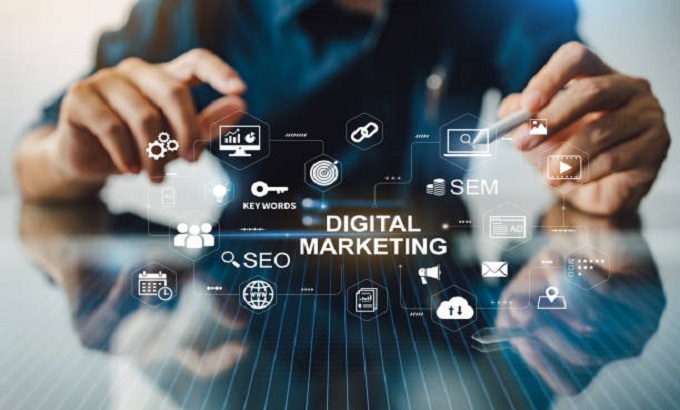Digital Marketing AI: Elevating ROI Strategies
Digital Marketing AI has become an essential tool for boosting companies’ return on investment (ROI). Together, they enable brands to navigate competitive environments and refine their strategies effectively.
By leveraging personalization, audience segmentation, and automation, AI is revolutionizing the creation and execution of campaigns. This transformation leads to better predictive analytics, enhanced content strategies, and optimized market impact. Fantasy Studio gives you a comprehensive guide to Digital Marketing AI.
The Role of Artificial Intelligence in Digital Marketing
Artificial intelligence has become the backbone of modern digital marketing, enabling data-driven decisions and efficient resource management.
Digital Marketing AI: Definition and Foundations
AI in marketing refers to using advanced algorithms and machine learning models to automate, optimize, and personalize customer interactions. Through techniques like natural language processing and predictive analytics, AI improves campaign effectiveness while reducing costs.
How AI is Transforming Marketing Practices
AI reshapes marketing strategies by:
- Personalizing Experiences: Tailoring unique, relevant interactions for every consumer.
- Optimizing Campaigns: Adjusting in real time to improve performance and conversion rates.
- Predicting Trends: Identifying patterns to anticipate consumer behavior and market shifts.
This shift not only refines communication methods but also redefines overall strategies, placing data at the core of decision-making.
AI Tools Empowering Digital Marketing
Key AI-driven tools revolutionizing digital marketing include:
- Google Ads: Enhances targeting and ad delivery.
- HubSpot: Automates email workflows and segments audiences.
- Chatbots: Platforms like Chatfuel provide instant customer support.
- Canva: Uses AI to craft personalized graphic designs.
These tools help brands create data-driven strategies, leading to better customer engagement and ROI.
Personalization and Audience Segmentation
In today’s digital landscape, personalization and audience segmentation are vital for building meaningful consumer connections.
The Value of Personalization in Marketing
Personalization delivers tailored messages and content, increasing user engagement and loyalty. When executed well, it improves conversion rates by addressing consumers’ unique preferences.
AI Tools for Effective Segmentation
AI-powered tools enable deeper audience insights:
- Google Analytics: Tracks user behavior to refine segmentation.
- HubSpot: Advanced segmentation for improved campaign personalization.
- Segment: Consolidates multi-platform data into actionable profiles.
By understanding specific user groups, brands can design targeted, impactful campaigns.
Strategies to Enhance Personalization with Digital Marketing AI
To create personalized experiences:
- Collect Data: Use surveys, forms, and online tracking to gather insights.
- Analyze Trends: Identify patterns to group audiences.
- Deliver Relevant Content: Tailor communications to each segment’s needs.
- A/B Testing: Evaluate and refine strategies based on real-time feedback.
These efforts result in stronger customer connections and higher ROI with Digital Marketing AI.
Automation of Campaigns and Processes
Automating digital marketing ai tasks enhances efficiency, allowing teams to focus on creativity and strategy.
Smart Campaign Automation
AI platforms streamline email scheduling, social media management, and audience targeting. Benefits include:
- Efficiency: Faster campaign execution.
- Real-Time Adjustments: Continuous performance monitoring.
- Enhanced Personalization: Customized workflows based on user behaviors.
Advantages of Task Automation
Automation reduces errors and enhances scalability. It also supports continuous data-driven improvements in marketing efforts.
Chatbots and Virtual Assistants
Chatbots like ManyChat enhance customer interactions by providing instant, 24/7 support. They also gather insights on user preferences, enabling better campaign refinement.
Predictive Analytics to Maximize ROI
Predictive analytics helps businesses anticipate consumer behavior and optimize marketing strategies.
How Predictive Analytics Works
By analyzing historical data, machine learning models identify trends and forecast future outcomes. The process involves:
- Data Collection: Gathering customer and market data.
- Modeling: Creating algorithms to represent behaviors.
- Validation: Testing accuracy with real-time data.
- Implementation: Applying insights to optimize campaigns.
Applications of Predictive Analytics
Predictive analytics improves ROI by:
- Identifying high-value audience segments.
- Adjusting pricing and promotions effectively.
- Anticipating customer needs.
- Preventing churn through targeted retention strategies.
Popular Predictive Tools
Tools like Google Analytics 360, Adobe Analytics, and Tableau enable businesses to implement predictive strategies efficiently. These tools enhance ROI by ensuring precise targeting and resource allocation.
Content Creation and Optimization
AI-powered tools have transformed how content is created and optimized for maximum impact.
Using AI for High-Quality Content
AI enhances content creation by:
- Generating Text: Platforms like OpenAI draft engaging content ideas.
- Identifying Trends: Tools to analyze audience preferences for topic planning.
- SEO Optimization: AI recommends keywords and meta-data adjustments to boost search engine visibility.
Enhancing Content Performance
Through AI, marketers can measure performance metrics, refine strategies, and consistently deliver content aligned with audience expectations.
This integration of digital marketing AI is reshaping the industry, enabling smarter strategies, and driving exceptional results. Businesses that embrace these tools will gain a competitive edge, maximizing ROI and building lasting consumer relationships.






Comments (2)
Obila Doe
Our infrastructure management approach is holistic, addressing capacity monitoring, data storage, network utilisation, asset lifecycles, software patching, wired and wireless networking and more.
James Weighell
A hosted desktop solution allows for the delivery of a consistent and scalable IT experience for all users in an organisation. With this solution, users gain access via a desktop icon or link.